Holding of the 7th Iran Steel Market Conference (ISMC) on February 14-15 in Tehran provided the impetus for reviewing present opportunities and challenges in the country’s steel industry as well as analyzing venues for reaching envisaged goals in the 6th five-year National Development Plan (NDP).
The international event was attended by over a thousand domestic and foreign activists in the steel market or related industries. Key figures who made presentations in the opening ceremony included Minister of Industries, Mines and Trade Mohammadreza Nematzadeh, Deputy Minister and Chairman of Board of Iranian Mines and Mining Industries Development and Renovation Organization (IMIDRO) Mehdi Karbasian, Former Speaker of the Iranian Parliament Ali Akbar Nategh Nouri, Deputy Minister and Chairman of the Board of Islamic Republic of Iran Railways (abbreviated RAI) Saeid Mohammadzadeh as well as Managing Director of Iran Mercantile Exchange (IME) Hamed Soltaninejad.
Also, Italy’s Danieli CEO Gianpietro Bendetti, Managing Director of Spain’s Sarralle Equipos Siderogicos Javier Esquiroz, CEO of Germany’s SMS Group Burkhard Dahmen, Russia’s INTECO Chairman and CEO Harald Holzgruber as well as Market Analyst in Turkish Steel Exporters Association Cihan Akdeniz were foreign guests who presented lectures on the opening day of ISMC 2017.
Steel industry plays a major role in economic growth and sustainable development in most countries including Iran. The Iranian government has therefore put development of the influential industry high on its agenda as evidenced by the significance of steel market in the 6th NDP. Moreover, the target of realizing 8.8% of economic growth will undoubtedly increase the demand for steel product.
As agreed by CEOs of giant steel companies from various countries in the conference, a lack of congruence exists between current steel output figures and the dormant capacity for production and exports of a wide range of products in the supply chain of the influential material. In other words, although the capacity existed for the steel sector to flourish, Iran’s main focus, at least until a few year ago, was mainly on direct exports of raw materials extracted from mines.
In his brief speech at the conference, Industry Minister Nematzadeh recalled that when the incumbent government took office, the steel chain was incomplete and malfunctioning as the country, despite enjoying unlimited resources, remained an importer of a wide variety of products in the supply chain. He further stressed that image of Iran as a sole importer of steel products was not holding true anymore as the country has now climbed to the 16th position in the global ranking of major exporters by deploying 18 million tons of steel to world markets. The official, while putting the audience on the guard that sanctions have made things less predictable, voiced optimism that Iran’s 2025 prospect of building the capacity for 55 million tons of steel will become realized.
Goals and Achievements
Former Parliament Speaker Nategh Nouri opened his remarks at the conference by quoting Prophet Muhammad (PBUH) who said ‘seek knowledge even if you have to go as far as china’ to emphasize that gaining knowledge was incumbent upon every Muslim. He used the hadith to stress that obtaining domestic goals in steel sector would prove impossible unless multilateral cooperation is boosted with the world.
Indeed, any progressive measure in the steel industry will lead to employment opportunities as well that annual steel consumption marks a major index for developed countries. On that account, the Iranian government is seeking to treble the country’s steel output by increasing the figure from 16.1 million tons of 2015 to 55 million tons in the year 2015, a goal which is theoretically feasible in view of existing capacities though certain challenges need to be tackled for it to be fully achieved.
Iran’s steel industry, with nearly five decades of experience, these days takes the path of developing the sector based on geographical, natural and economic circumstances. Fortunately, serious efforts have been made to avoid non-professional and non-scientific decisions for progress. Recent measures have brought about noteworthy outcomes in the field as the Iranian industry experienced 45% of growth in the first nine months of the current Iranian calendar year leading to January 2017. Moreover, the first ever sponge iron plant of Iran came on stream two months ago while several exploration projects are still underway. A three-million-ton plant has been also constructed in Gol-e-Gohar to turn Iran into an exporter of steel sheets to Europe. Several steel giants, including Italy’s Danieli, Spain’s Sarralle Equipos Siderogicos, Germany’s SMS Group and Russia’s INTECO, have been actively participating in the Iranian industry though they seek to bolster ties with Iran. As such, Danieli Persia plant has been constructed in a joint venture between Iran and Italy and will begin production in April 2017. The plant will mark the biggest steel factory in the Middle East and will be operated only by Iranian engineers, as asserted by Danieli CEO Gianpietro Bendetti.
Despite the global recession in steel recession, Iran managed to achieve a growing trend in the year 2015. In a broader view, the growth rate for Iran has been 10% while the global figure has stood at only one per cent. Iran has also obtained considerable achievements in the mine discovery
As announced by Mr. Nematzadeh, the country’s ‘Steel Comprehension Plan’, which comprises obligations to achieve the goal set in prospective document of steel industry in 2025 horizon, is being implemented while at the same time being modified to comply with world’s changing conditions.
Opportunities
Iran remains a big market in mineral and energy sectors and the fact that it is now placed among top 15 steel producers indicates that the country’s industry is practically and competitively ready to achieve intended goals. All keynote speakers at ISMC 2017 unanimously agreed that, despite certain challenges, the Iranian market holds a prosperous future thanks to numerous opportunities available at various levels.
For one thing, Iran possesses nominal capacity to manufacture 68 types of steel which can be recovered in a bid to produce more value added, boost national production and reduce reliance on foreigners.
Managing Director of Spain’s Sarralle Equipos Siderogicos Javier Esquiroz enumerated Iran’s strengths and its potentials for growth including diversified economy, highly scientific and educated human resources and a huge consuming class. Other features were vast urban population, the strategic location of the country and the age-old entrepreneurial tradition ongoing in the society.
These factors all indicate the business environment is following a positive and upward trend in recent years. This is attested by the words of Mr. Esquiroz who said “all facilities at South Kaveh Steel (SKS) Complex, as a subsidiary of Sarralle, have been manufactures in Iran and by local producers.”
He further voiced his company’s eagerness to make presence in various sectors as it has a hand also in power houses, water and slag treatment plants as well as zinc recovery factories, which in turn indicates increased willingness of foreign investors for participating in Iran. Sarralle CEO also expressed readiness of Spanish banks to finance Iranian projects which can be deemed as a golden opportunity at a time when 30 billion dollars of investment is required to complete steel chain from mining to production.
Danieli MD Bendetti, for his part, deemed low production costs as the main advantage of the Iranian steel market. He stressed that steel production in Iran was 15% less expensive than the global figure and 25 per cent lower than the figure for the US. Moreover, as maintained by IMIDRO head, natural gas is supplied to steel production plants and lower gas prices will surly lead to better steel industry.
CEO of Germany’s SMS Group Burkhard Dahmen pointed to the constructive measured taken by IMIDRO who has conducted several studies not only for expanding the mineral sector but also for better exploitation of steel in automotive and petrochemical industries. He also maintained that exports of Iranian oil to Europe have drastically improved market conditions. SMS Group, which has now spread out to 50 locations in the world, has been present in Iran since 1970 when it constructed the first major steel production centers here. The German company, while still holding ties with Mobarakeh Steel Company, is seeking to conduct joint venture with Iranian counterparts through long-term cooperation in various arenas line spare parts, services, maintenance and repair. The project to expand Hormozgan Steel Company (HOSCO) in Bandar Abbas and Khayam Steel Complex in Neyshabur mark other instances of the German company’s presence in Iran.
Yet another asset enjoyed by the Iranian steel industry pertains to the developments made by Iran Mercantile Exchange (IME). Managing Director of IME Hamed Soltaninejad, while underscoring IME’s functionality in national economy, reported on addition of iron ore to world commodity exchanges saying “steel has experienced the greatest growth in global exchange markets. The official further pointed to improvements made in IME over 14 years of activity including appearance of spot contracts, commodity funds, Standard Parallel Salam contract (SPS) and above all futures and options contracts. Soltaninejad proposed the idea of using CDR contracts in the steel industry and invited foreign producers to take part in IME given its high capacity.
Challenges
Almost all lecturers at ISMC 2017, while acclaiming exceptional merits of the Iranian steel industry, acknowledged that certain obstacles exited in the path of an ideal condition. Perhaps the toughest bottleneck faced by the global market is the emergence of ‘New Normal Era’ introduced by Mr. Benedetti, Managing Director of Danieli. In order to explain the big picture faced by the global steel industry and markets today, he sketched out a graph of global steel consumption over time. The illustration started with the growth in demand during reconstruction after the end of the Second World War, saw the impact of the 1970s oil crisis, the fall of the Berlin Wall in 1989 and subsequent dismantling of the Soviet Union and then a plateau in consumption at the end of the last millennium. “For ten years, we continued to consume 700 million tons per year (tpy) of steel.” Then we had China from 2000 and ‘boom’,” he reminded adding “now we have ‘the new normal.” He emphasized that a huge rise was being observed in output while still consumption was going down the hill for various reasons like ageing and decrease of population, rise in popularity of electric vehicles, the growth in use of plastics and carbon-fiber. Also, physical strength of steel will become ever stronger, and consequently tonnage consumed will decrease. “So, to conclude, this trend of ‘the new normal’ is a big question mark and I believe that the number of tons will decrease. Today we have overcapacity for steel production of 30% and it is my opinion that overcapacity will further increase.” “So we have a new normal that is worse than 1970-2000 for the reasons I have explained,” he added stressing that constructing new plants was not a logical idea and expressed hope the mini-mill and micro-mill concept will flourish again and offered more regional production as a suitable solution to challenges of the new normal era since transporting steel products over long distances, from developed countries which have a less demand to emerging economies with higher demands, is not feasible any longer.
To talk more specifically about the Iranian steel market, old technology used in plants remains as a major barrier to reaching desirable output levels. Furthermore, in view of the current situation of water stress condition and prolonged droughts, considerable pressure is places on the way of development of steel industry since water supply is one of the most fundamental infrastructures of the Iranian industry and requires careful attention and planning.
Another barriers pertains to bureaucratic restrictions and frequent changes made to regulations which hinder activities of steel exporters. Also, although, Iran’s access to open waters can be a significant opportunity for development of steel industry, given the limited drought in southern ports of Iran, vessels with over 150000 tons of capacity cannot berth there and the issue is likely to reduce competitiveness of Iran against other countries who pursue goals of steel exports.
What’s more, the role of transportation in any industry as target of the country’s development cannot be ignored. Head of Iran Railways (RAI) Saeid Mohammadzadeh pointed to serious challenged in rail sector and called for lifting rail capacity in time with boosting output. He said despite Leader’s emphasis on transferring goods from road to rail, we still observe low share of rail in goods transport. “Disputes between road and rail authorities need to be settled,” highlighted the official emphasizing the need to increase capacity of mineral carriages, reopening of disused stations, raising financial resources as well as electrification of railways.
Moreover, foreign investors also seek investment security above anything else before entering the Iranian market. Iran not being a member of World Trade Organization (WTO) is yet another issue at stake which was pointed to by the Turkish market analyst Cihan Akdeniz. He also found it surprising why additional import taxes, as an additional burden, existed in Iran since the country enjoys several advantages like low energy costs and can easily compete in global markets.
Requirements
Therefore, in view of above-mentioned opportunities and challenges, high-ranking participants of ISMC believed that the time was ripe for blooming of the Iranian steel industry though the objective required raw material producers and policy makers to world hand in hand and take the most out of post-sanction chances. As put by the Iranian industry minister, recent year developments are ‘just the beginning of a long process.”
Mohammadreza Nematzadeh called for more value added by discovering and exploiting underground mines in addition to ordinary ones. Deepening ties with international banks, strengthening of downstream sector in steel industry and production of stainless steel were further steps urged by the official. Other measures recommended by industry minister included lowering of energy and utility consumption as well as manufacturing of special steel directed to specific demands of customers.
Mr. Nategh Nouri called for less reliance on oil revenues on the grounds that oil-based economy proves harmful in the long run. He therefore referred to the need to attract domestic and foreign investors to other sectors including steel industry. The former speaker of Iran’s Parliament said technology was fast-moving and that meeting requirements of buyers, increasing quality, adding variety and complying with latest standards were essential requirements for remaining in the global market.
Javier Esquiroz, for his part, suggested making huge domestic and foreign investment in a bid to improve productivity. He also underscored the importance of gaining know-how and improving management skills. Strengthening financial systems and upgrading infrastructures were also advocated by Sarralle CEO.
In view of Italy’s Danieli CEO, proper steps to be taken in the ‘new normal era’ include lifting quality, improving customer services while reducing operating expense (Opex). Gianpietro Bendetti also noted the possibility to promote plant utilization from the current 72% to 95 per cent by taking the Italian firm’s technological packages which can boost casting speed and bring about create smart plants with the ability to produce steel at a wide variety of grades and dimensions.
CEO of Germany’s SMS Group Burkhard Dahmen underlined that any development would require support of both private and public sectors. He also urged authorities to back the process of bolstering banking relations with European monetary institutions.
As for supplying the required amount of water, considering current condition of drought in the country, it would be hopeless or even impossible to use underground water anymore. Therefore, alternative solutions need to be considered like using agriculture portion of water in industry, urban waste water treatment, reuse of industrial wastewater and seawater desalination for neighbors and even transferring it to target areas. Meanwhile, lack of attention to geographical location of construction of new plants in steel chain can cause irreversible damages.
One more issue to consider while building the capacity of 55 million tons is the transfer of new applications to southern coasts. This is due to the access to water and energy and price reduction complies a geopolitical and economic logic. In addition, modification, upgrading or deployment of new technologies to reduce energy consumption, especially water, is the vital need of steep output in Iran. To this end, cooperation has been launched with Japanese companies that have working experience in DRI plants in Iran. One the project is accomplished, ten million tons of steel production capacity in Iran will reduce water consumption up to 40% which is a vital consideration due to the country’s climate conditions.
On the other hand, development of any industry, steel in particular, will be impossible without expansion of infrastructure. Over the past years, Iran has made efforts to construct or develop ports and elevate share of rail transport as evidenced by the Sangan-Khaf steel railway though further measures are required. Capacity of SEZs, including Persian Gulf Special Economic Zone, also needs to rise by attractive investment.
To recapitulate, transferring steel to southern coasts, use of new technologies and development of infrastructure are basic steps for reducing costs of production, transportation and also manufacturing and supplying competitive products like steel.
HA

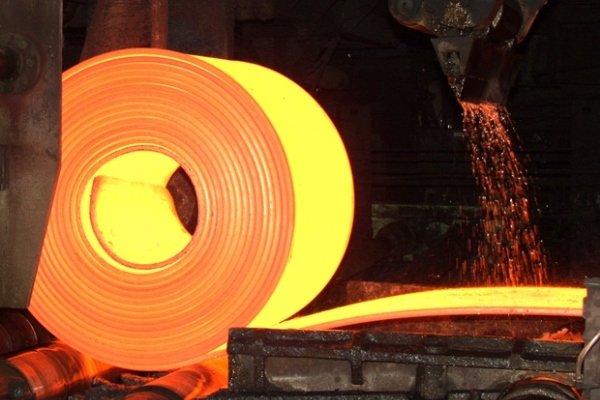
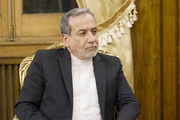
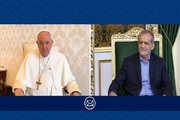
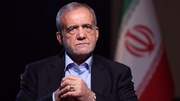
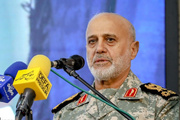

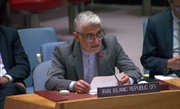

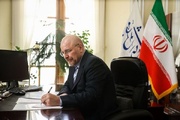
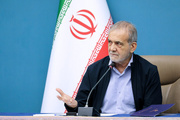
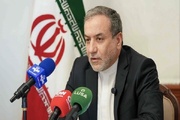










Your Comment